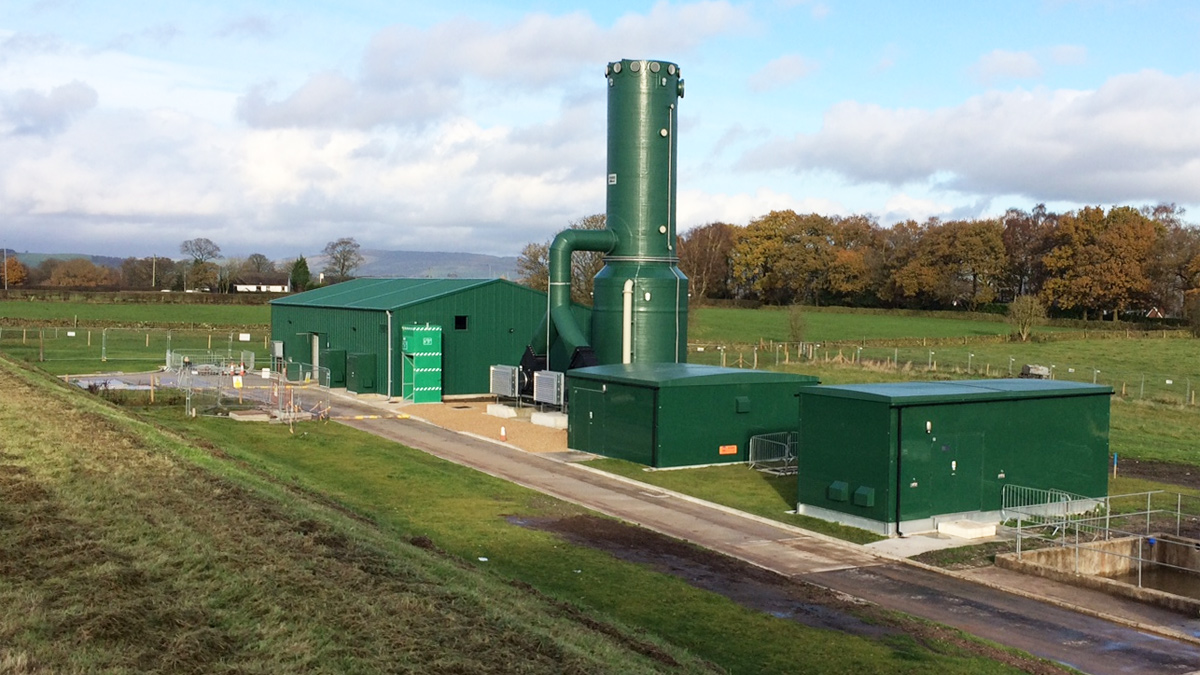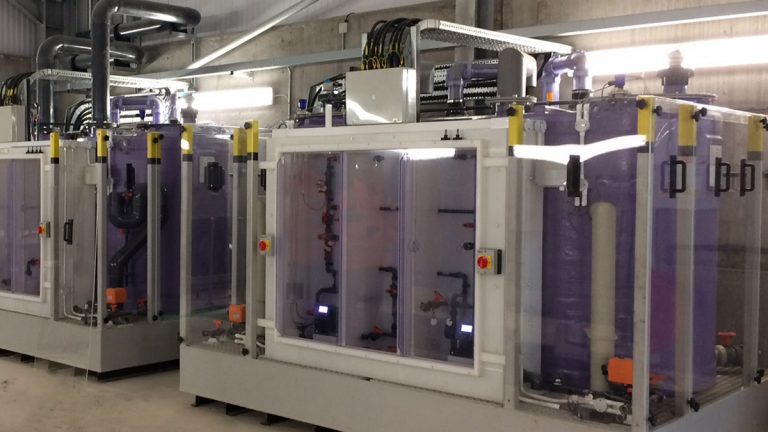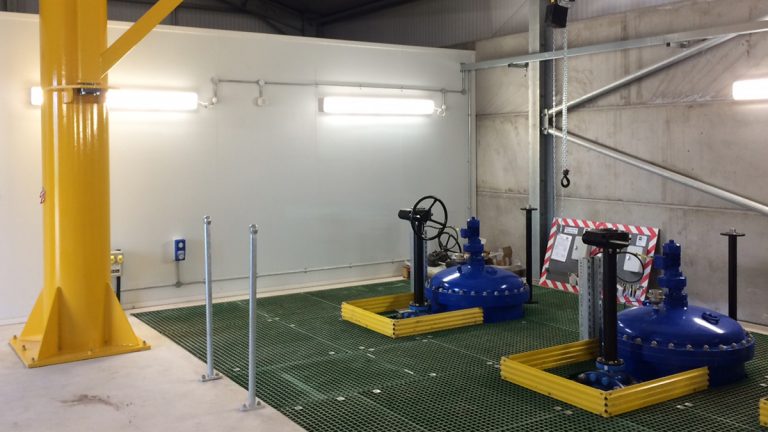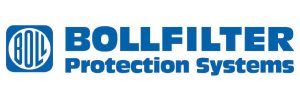Wallgrange Solvents and pH Improvements (2017)

C\Newly constructed treatment works at Ladderedge - Courtesy of MMB
The £3.3m Wallgrange Solvents and pH Improvements Scheme required the replacement of two existing borehole pumps and the design and construction of a water treatment works sized to treat 20ML/day. The installation of this treatment works has directly addressed a number of water quality issues and has delivered a more resilient supply to thousands of customers. The scheme, delivered by Mott MacDonald Bentley (MMB), involved the construction of a new water treatment works on the site of the existing Ladderedge Distribution Service Reservoir (DSR), and the replacement of borehole pumps at Wallgrange Borehole Pumping Station (BPS).
Background
A number of water quality issues are present in the raw water abstracted from the Wallgrange boreholes, including high levels of turbidity, frequent bacteriological detections, high levels of chlorinated hydrocarbons, low pH and an amber cryptosporidium Drinking Water Safety Plan (DWSP) risk. The high level of chlorinated hydrocarbons from Wallgrange BH2 had seen it taken out of operation reducing output from Wallgrange by 10ML/day.
All these water quality issues were to be addressed by this project, with a Drinking Water Inspectorate commitment to resolve pH and solvents issues in AMP6.
In addition, there were several site operational issues at Wallgrange which have been resolved as part of the project. These included:
- Difficulties delivering chlorine gas to Wallgrange in winter as the site access road is often unpassable.
- The need for boreholes to be run to waste on start-up due to high levels of turbidity. This could take up to four hours and required operational staff to be on site to manage the process.
Wallgrange BPS is part of the Ladderedge Control Group which consists of four borehole sites and Tittesworth Reservoir and surface water treatment works. All of these sites feed Ladderedge DSR.
There are two boreholes at Wallgrange. Abstracted water was first treated by a chlorine gas system at Wallgrange, then by a temporary UV system and dosed with orthophosphoric acid (PO4) at Ladderedge DSR before entering Ladderedge DSR.
Scope of works
In order to deliver a sustainable and efficient solution, in relation to the scheme drivers, the following works were undertaken:
- At Wallgrange Borehole Pumping Station
- Installation of new borehole pumps with variable speed drives and downhole sand separators to reduce the amount of sand being drawn.
- Removal of chlorine gas disinfection equipment.
- At Ladderedge Distribution Service Reservoir
- Construction of a steel portal framed building to house the following; Bollfilters, an antiscalant dosing system prior to aeration tower to prevent scaling at the aeration tower, hypochlorite dosing rig and a new motor control centre (MCC).
- Installation of end suction low lift pumps to pump the partially treated water through the rest of the treatment processes and an associated kiosk.
- Installation of an aeration tower to reduce total chlorinated solvent concentrations and raise the pH.
- Installation of a new factory built assembly (FBA) UV treatment plant to replace the existing rig, to address faecal indicator bacteria and cryptosporidium.
- Installation of a sodium hypochlorite dosing system for disinfection – this was achieved via the installation of a static mixer inside an underground chamber.
- Installation of a new sewer pumping station and transformation of the salt saturator bund into a settlement tank.
- In addition there were further associated works including installing process and storm water drainage, ducting, inlet and outlet pipework, construction of a chemi-safe area and modifications to the site road.

Antiscalant and hypochlorite dosing rigs – Courtesy of MMB
Efficient design and build and factory thinking
The project utilised a number of factory build assembly (FBA) products, removing the need for on-site construction of these items.
- The standard Severn Trent Water (STW) UV kiosk, used across STW’s AMP6 UV batch, supplied by Lintott was installed on-site. The repeated use of this product gave additional efficiencies as MMB design, construction and commissioning staff could transfer design, construction techniques and best practice from previous projects into this scheme.
- The aeration tower was designed and manufactured off-site by Forbes providing a more cost-effective solution for the removal of solvents than a more traditional granular activated carbon (GAC) treatment plant.
- Gee and Co also supplied factory built dosing skids, for hypochlorite and anti-scalant dosing systems.
Overall the use of FBA products has provided significant cost and programme savings. Manufacture in a controlled environment also allowed greater levels of quality assurance and control of construction health and safety risks. Being able to reduce the number of on-site construction activities was highly valuable on such a large scheme.
The ability to factory test these items of plant also allowed potential commissioning issues to be minimised before delivery to site, and gave assurance over the products’ functionality.
Reusing assets
As part of the scheme the redundant salt saturator bund was reused to create a settlement tank to reduce the suspended solids content of the Bollfilter backwash water, which is discharged into the sewage system. The associated kiosk, previously used for control, was also reused to provide an on-site welfare facility. This yielded significant cost and embodied carbon savings and reduced the health and safety risk associated with the construction of these two items.

Bollfilters and lifting equipment – Courtesy of MMB
Borehole yields
Due to some uncertainty in borehole yields which had the potential to affect the performance of the aeration tower, there was a potential that recirculation pumps may be required. In addition, the treatment of water within the aeration tower had the potential to cause a rise in turbidity which would have required the installation of cartridge filters.
A phased approach was taken to allow for the additional features that may have been required and an allowance made within the programme to retrofit these once commissioning had commenced and there was a greater degree of certainty in the treatment process.
This approach provided a cost-effective approach meaning that unnecessary items of plant were not installed. It will also allow greater flexibility for any alterations that are required to the treatment process in the future.
Health and safety and risk reduction
MMB and STW realise that health and safety performance is imperative and that health and safety leadership comes from all levels of the company. The Wallgrange UV scheme has a proactive health and safety culture which was demonstrated by the high levels of positive intervention reporting. The leadership shown by Rob Boniface (Site Delivery Manager) and Paul Smith (Works Manager) resulted in them receiving an internal JN Bentley ‘Be Recognised’ nomination.
During the collaborative planning process, which aims to engage and bring together the wider project team, the ability to gain permission to shutdown the Wallgrange borehole to replace the borehole pump was identified as a potential risk to the project programme.
This early identification allowed MMB to challenge and work collaboratively with the borehole pump supplier on their lead and delivery time and highlighted the need for early engagement with STW’s network control team. The shutdown, required to allow the installation of new borehole pumps, was carefully planned to minimise the time needed to cut off supply to the reservoir. The works were also planned to fall outside of the higher risk summer months when demand is often high and available supplies are lower. This minimised the risk of a cancelled shutdown or reservoir levels becoming low during the works. The ability to move the programme forward away from the summer months also reduced this risk further.
Customer engagement
A number of residential properties are located close to and within view of the new treatment works. In order to engage with local residents, they were invited to an open day where an overview of the scheme was provided and stakeholders had the opportunity to ask any questions about the scheme.
Severn Trent’s ‘DOLLY’ bus was utilised to provide refreshments and further information to customers. This positive engagement with the local community lead to an agreement to undertake some additional tree planting to provide screening to the treatment works.
Conclusion
The completed Wallgrange Solvents and pH Improvements Scheme has directly addressed the water quality and operational issues which were present prior to the schemes construction. This has allowed borehole two to be brought back into service increasing the maximum yield from the Wallgrange Boreholes. This will provide greater resilience to the Ladderedge Control Group during drought periods protecting the water supply to thousands of customers.
The reuse of existing assets and use of FBA, standard products and package plants allowed for an efficient, cost-effective and sustainable delivery of the project.
Provision in the design for additional treatment allowed for a phased approach to construction and now gives flexibility for future on-site treatment. Early collaborative planning allowed programme risks to be identified and mitigated allowing efficient programme delivery.






